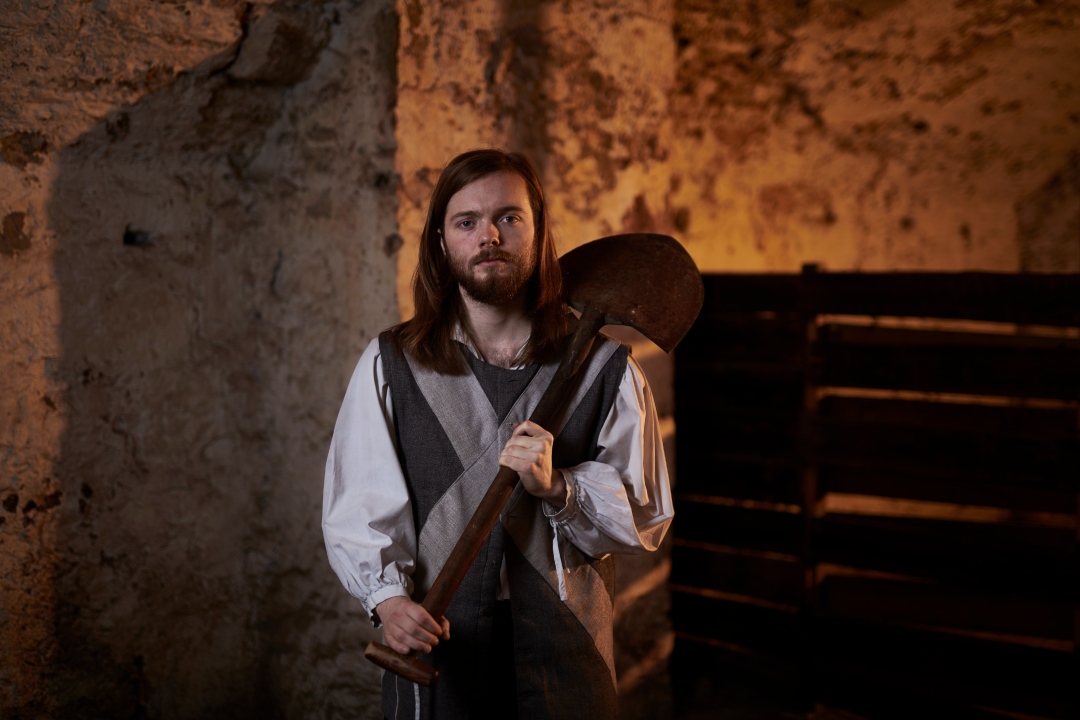Why did Foul Clengers wear the St Andrews cross?

With St. Andrews Day happening at the end of this month, we’re taking a closer look at why Edinburgh’s Foul Clengers wore the St Andrew’s cross on their uniforms…
In history, there are often unsung heroes who played pivotal roles during times of crisis. In 17th century Edinburgh, during its last outbreak of the plague in 1645, such heroes emerged in the form of the “Foul Clengers”.
One unique aspect of their work was their choice of protection – the St. Andrew’s cross, a symbol of the patron saint of Scotland. In this blog, we delve into the story of the Foul Clengers, their methods, and their symbolic choice of protection.
The Foul Clengers
The Foul Clengers, or “Plague Cleaners”, were teams of brave men and women entrusted with the grim responsibility of burying bodies and moving infected people to quarantine camps. These were located outside the city walls, mostly near the Burgh Muir. Today, we know the area as Sciennes or the South Meadows.
The plague had arrived in the city during the winter of 1644, spurring Edinburgh to recruit a team of dedicated workers to dispel, or “cleanse” the area of disease. At The Real Mary King’s Close, you’ll get to learn more about their methods and the story of Lang Meg, a female Foul Clenger who met a rather unfortunate end while on the job.
However, if there’s one thing you need to know to understand why Foul Clengers wore the St Andrew’s cross while undertaking their gruelling work, it’s the theory of miasmas.
The theory of “miasmas”
During the 17th century, people believed that “miasmas,” or bad smells, were the culprits behind the deadly plague. To dispel these miasmas, the Foul Clengers ventured into the homes of the deceased and burned a sweet-smelling shrub called broom.
In reality, the plague was spread by fleas carried by rats that had infested cargo ships arriving from the continent. Thankfully, in the end, the fire and smoke from the broom ended up driving the rodents out of Edinburgh instead! So the Foul Clengers really were indispensable to the city.
Most people believed that the miasmas had been sent by God to punish the populace for its sins. In order to adequately protect themselves, the Foul Clengers bore the St. Andrew’s cross on their uniforms…
Symbolism of the St Andrew’s Cross
You may recognise the St Andrew’s cross from Scotland’s national flag, the saltire. Amazingly, it’s one of the oldest – if not, the oldest – flag in Europe.
Essentially, Scotland adopted St Andrew as its patron saint around 1000 AD. The legend connecting the famed disciple to Scotland dates all the way back to the 4th century, when Early Christianity first arrived in the British Isles.
Safe to say, this is a symbol that would have held deep religious, as well as historical, significance for Scotland back in the 17th century. Just as it does today! By bearing the cross, the Foul Clengers displayed their piety and wouldn’t incur the wrath of God…
At least, that was the idea. The unfortunate reality is that many Foul Clengers succumbed to the plague themselves. Nonetheless, they are a core part of Edinburgh’s history and worth celebrating as heroes in helping to save lives during the worst outbreak of the plague the city ever saw.
Want to learn more?
BOOK one of our tours at The Real Mary King’s Close today!









